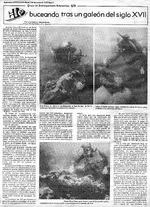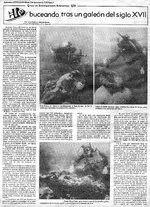E
elle
Guest
Jose...you are such a delight everytime you post...making me laugh!
I would rather not journey into a deep canyon at 140 degrees...
more desireable for me to be in cool water...COLD WATER in fact is fine with me!
Last time I was on a mule was on the island of Hydra.
I wanted so much to travel up the hill to visit the Holy Monastery of Elijah, but had to reluctantly drop the idea or I would
have missed my transportation back to the mainland!
As for cannon used as ballast...the Rio Mar wreck is a perfect example. Five cannon were found piled together with manila line
tied around the gun tubes. It is so evident this was done purposely...way before the vessel was lost.
I would rather not journey into a deep canyon at 140 degrees...
more desireable for me to be in cool water...COLD WATER in fact is fine with me!
Last time I was on a mule was on the island of Hydra.
I wanted so much to travel up the hill to visit the Holy Monastery of Elijah, but had to reluctantly drop the idea or I would
have missed my transportation back to the mainland!
As for cannon used as ballast...the Rio Mar wreck is a perfect example. Five cannon were found piled together with manila line
tied around the gun tubes. It is so evident this was done purposely...way before the vessel was lost.












